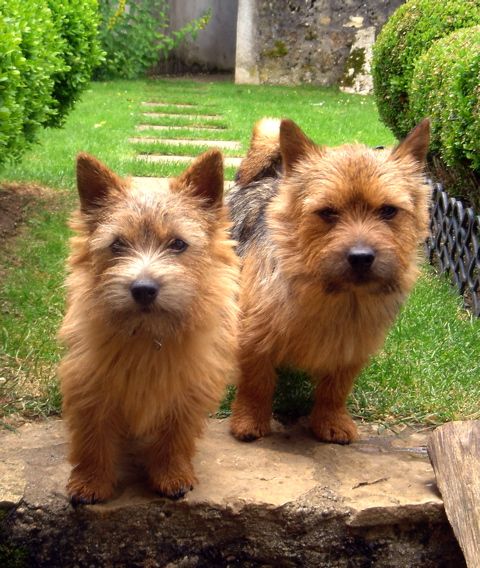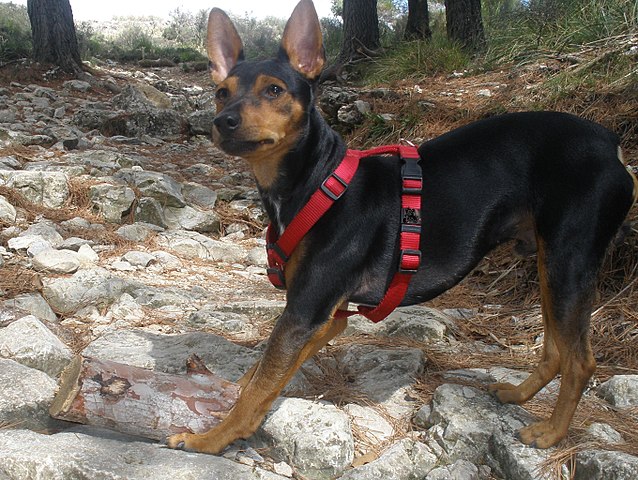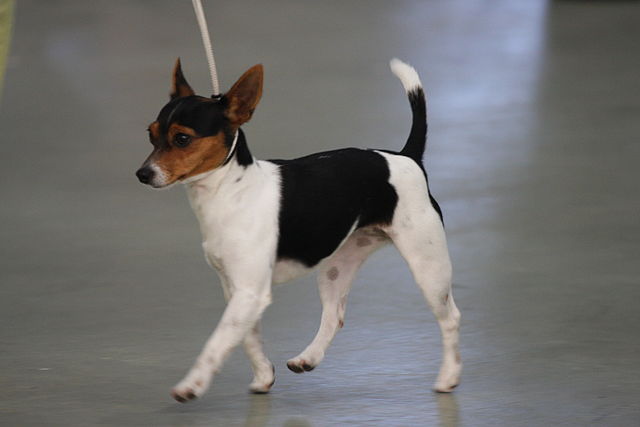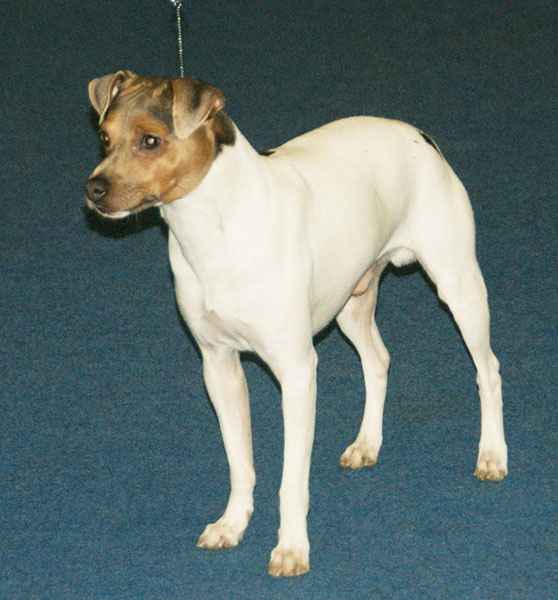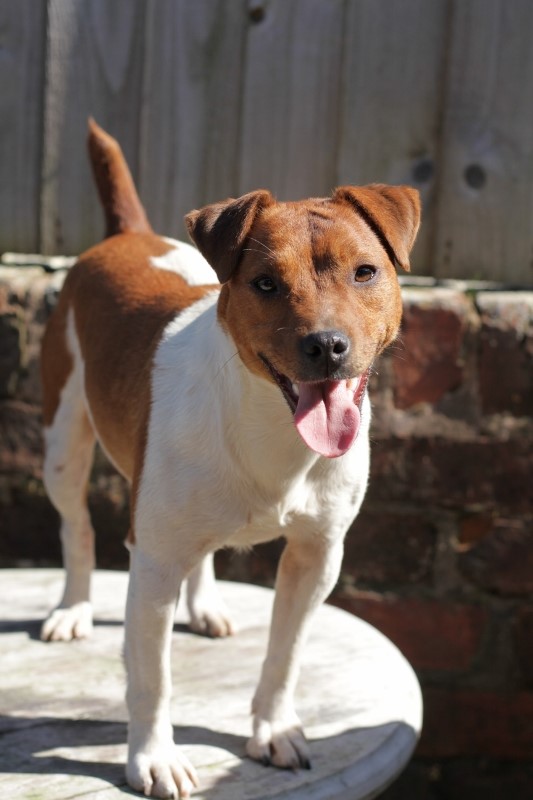The Norwich Terrier is an affectionate little dog, originally bred to kill vermin in England. These curious and feisty terriers have plenty of energy stuffed inside their relatively tiny frames, and are still able to do what they were bred to do if given half a chance. While they make great companions, they are not a toy breed and aren’t content to just sit on a lap all day doing nothing. Instead, these rough-and-tumble dogs are fearless, study… and unafraid to rip apart your garden on a cold fall evening in search of critters! This isn’t to say they aren’t capable of being calm and collected (they are quite capable of this as long as their needs are met), but they do enjoy their playing/hunting time!
Norwich Terriers can be very willing to please and therefore are quite trainable. Their intelligence means that they learn easily although they can get easily distracted (especially around moving animals or birds). This tendency to chase means that they should always be kept in a fenced yard. While the Norwich can be trained off-leash, it takes time and effort, not to mention plenty of practice! Once trained, this tiny terrier is capable of excelling in dog sports such as barn hunt, agility, earthdog, flyball, and even competition obedience. The Norwich really does best when given a job to do.
The Norwich usually gets along fairly well with other dogs, a trait which sets him apart from many other terrier breeds. He also loves being around people – both his own family as well as new human friends, although is most loyal to his immediate family. He gets upset when left alone for too long, so doesn’t do well in households where everyone works. This little terrier always happy and affectionate, and needs others with which to share his enthusiasm with. The breed also gets along great with children. The only living beings they tend to not do well with are small pets that roam free in the house, such as un-caged birds or ferrets.
The wiry, low-shedding coat of the Norwich helps to protect him from both inclement weather and overgrown vegetation. It is fairly easy for an owner to maintain as long as grooming is kept on a schedule. If an owner wants the coat to remain wiry in texture and bright in color, they should learn how to strip it (a technique where the dead coat is pulled out). Alternatively, a groomer could be hired do this job as long as they are experienced in the stripping of terriers. Baths don’t need to be done too often, as the coat naturally repels dirt, however after a while it will build up and need a good wash.
The active Norwich Terrier requires both mental as well as physical stimulation on a regular basis. Because they are so inquisitive, they really should be given regular on-leash outings to parks or other outdoor destinations. A walk around the neighborhood is ok… but the Norwich is happiest when taken on regular adventures! Super playful, many are usually up for a good game of frisbee once they’ve arrived at the park (but remember the fence rule). Overall, they should be given at least an hour of exercise a day. As the breed can be prone to obesity, it is easy to tell when a Norwich is not getting enough physical exercise.
The size of the Norwich means that he is able to live happily in an apartment as long as enough exercise is provided. Keep in mind, however, that this breed can be noisy as well as intense in everything he does – so it takes the right owner and situation in order to make the apartment circumstance work well. Although tiny in body, the Norwich is definitely not tiny in mind! He will bolt out of doors, scratch up carpet and/or bark for hours if his needs are not met! Small puppies can also take longer to housebreak than other breeds, which may be something to think about for people not willing to forgo their pet deposits!
